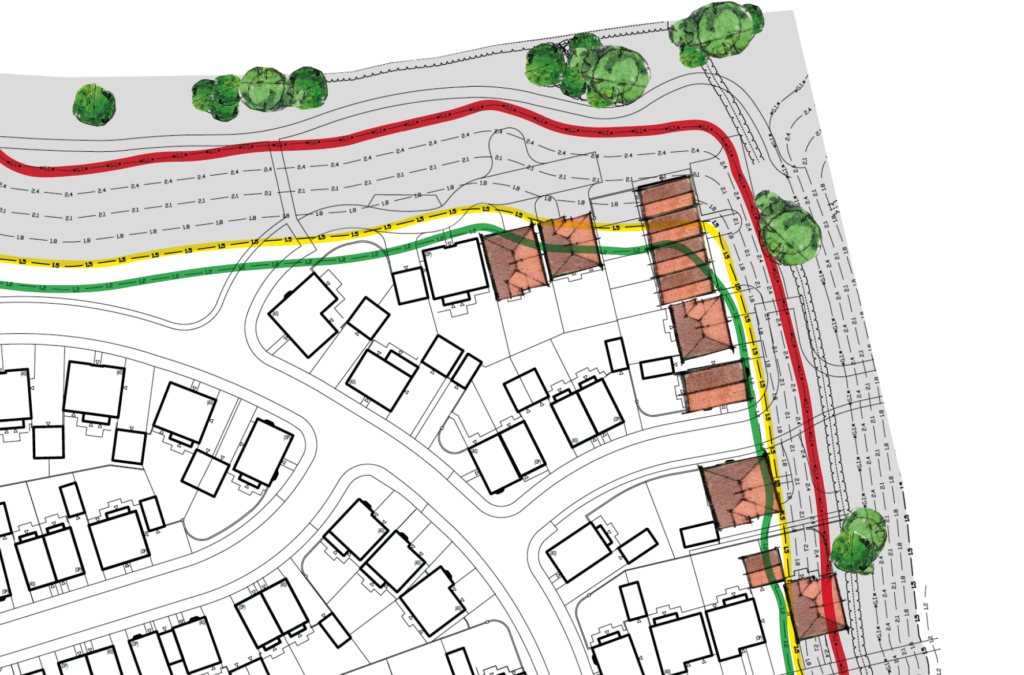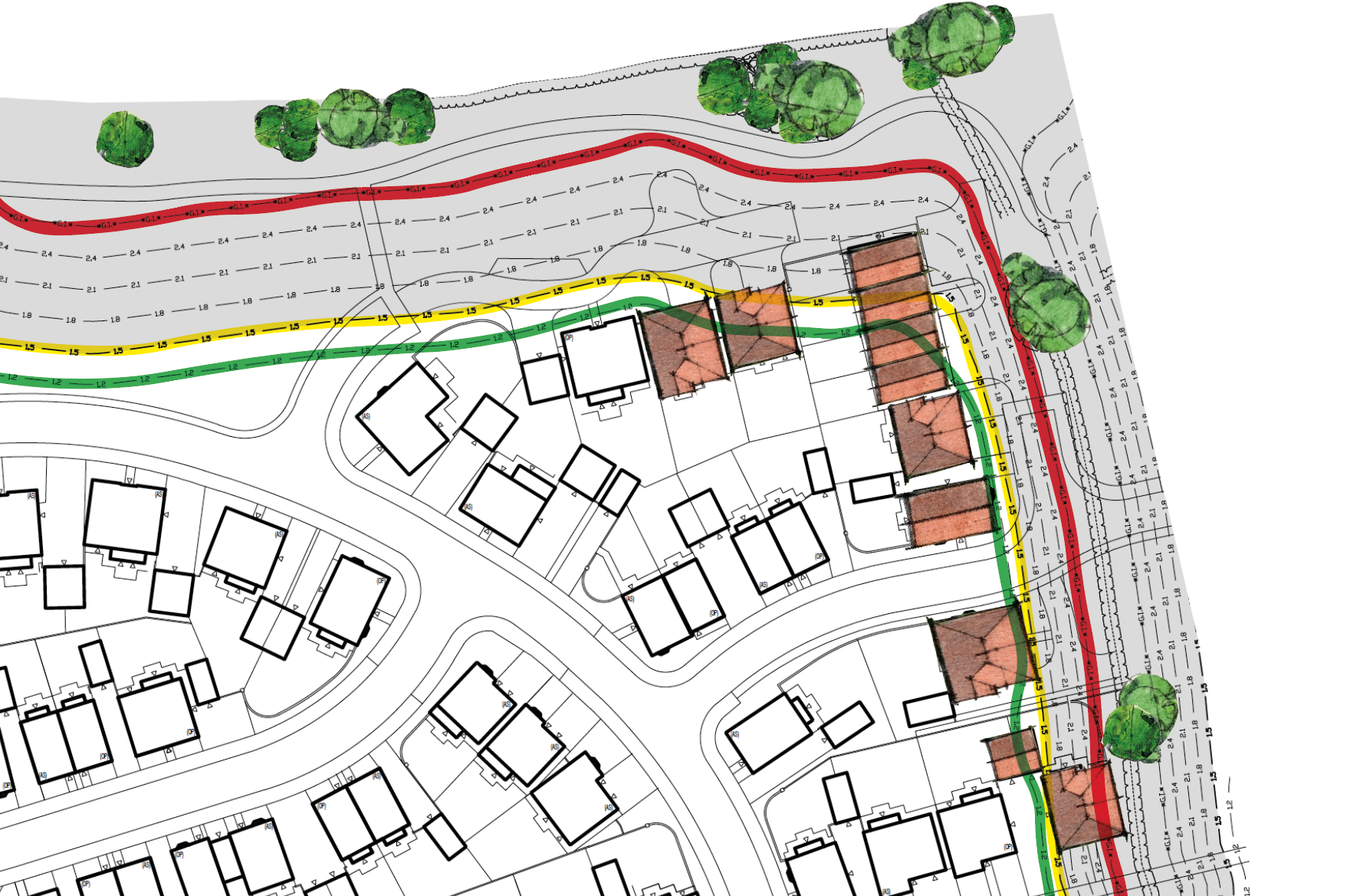In our third post regarding soil desiccation, we focus on designing foundations for low rise housing taking account of both seasonally and tree induced desiccation.
The impacts of seasonal desiccation are mitigated by using minimum foundation depths which are dependent on the plasticity index (PI) to determine the volume change potential of the soils. Soils with a PI of 10% or less are considered not to have a volume change potential and a minimum depth of 0.6m applies. For more plastic soils (PI greater than 10%), minimum depths range from 0.75m where the PI is between 10% and 20% (low volume change potential) and 1.0m for soils with a PI of 40% or more (high volume change potential).
In addition to seasonal desiccation, trees also remove moisture from the ground; however, this can be much deeper than seasonal desiccation. Tables, such as those presented in NHBC Standards 2023: Chapter 4.2 give recommended foundations depths based on the volume change potential of the founding strata. However, when the depth of influence potentially exceeds 2.5m, foundations need to be engineer designed as the depth of potential desiccation is unknown.
Plots that fall within the engineer design zone often result in piled foundations being specified; however, this may not aways be the most cost-effective or timely solution. Whilst the depth at which piling becomes more economic varies from developer to developer, it is typically in the region of 3m and will also depend on the number of plots to be piled with other factors such as programme also needing to be considered.
Where plots do fall within the engineer design zone, desiccation testing can be used to advise on the foundation solution. Desiccation testing involves creating a depth related strength, moisture content, plasticity indices and swelling pressure profile at a minimum of two locations. These are typically undertaken where the greatest amount of influence will be observed (i.e next to plots within the engineer design zone) and at a control location, such as in area of similar geology where the effects of any trees will be negligible.
Desiccation testing should not be used to design foundations where the remnant trees are immature and less than half their mature height, as the influence will not be at its greatest extent. Care also needs to be taken when assessing tree heights, as pollarding and trimming will have an impact on their height.
By comparing the target and control profiles an assessment can be made as to the depth of desiccated soils, therefore potentially allowing the foundation designer to specify traditional foundations rather than piled foundations. The sketch below highlights plots where foundations will fall within the engineer design zone (red line) and where plots first exceed minimum depths (green line). The sketch also highlights the heave zone (yellow line) and plots within this zone also need to incorporate heave precautions, such as voided suspended floor slabs and void former to protect against vertical and lateral heave respectively.

The timing of desiccation testing is also very important. Where trees have already been removed, then the testing can be undertaken at any time as the influence is at it maximum. However, where trees are to remain, then the testing should be undertaken in July, August, September when the influence of the trees will be at its greatest.
If you have a development site where significant tree influence is predicted, then please get in touch to find out how we can help save both time and costs. Please use your main point of contact at GRM or for new enquiries email richard.upton@grm-uk.com or call 01283 551249.


